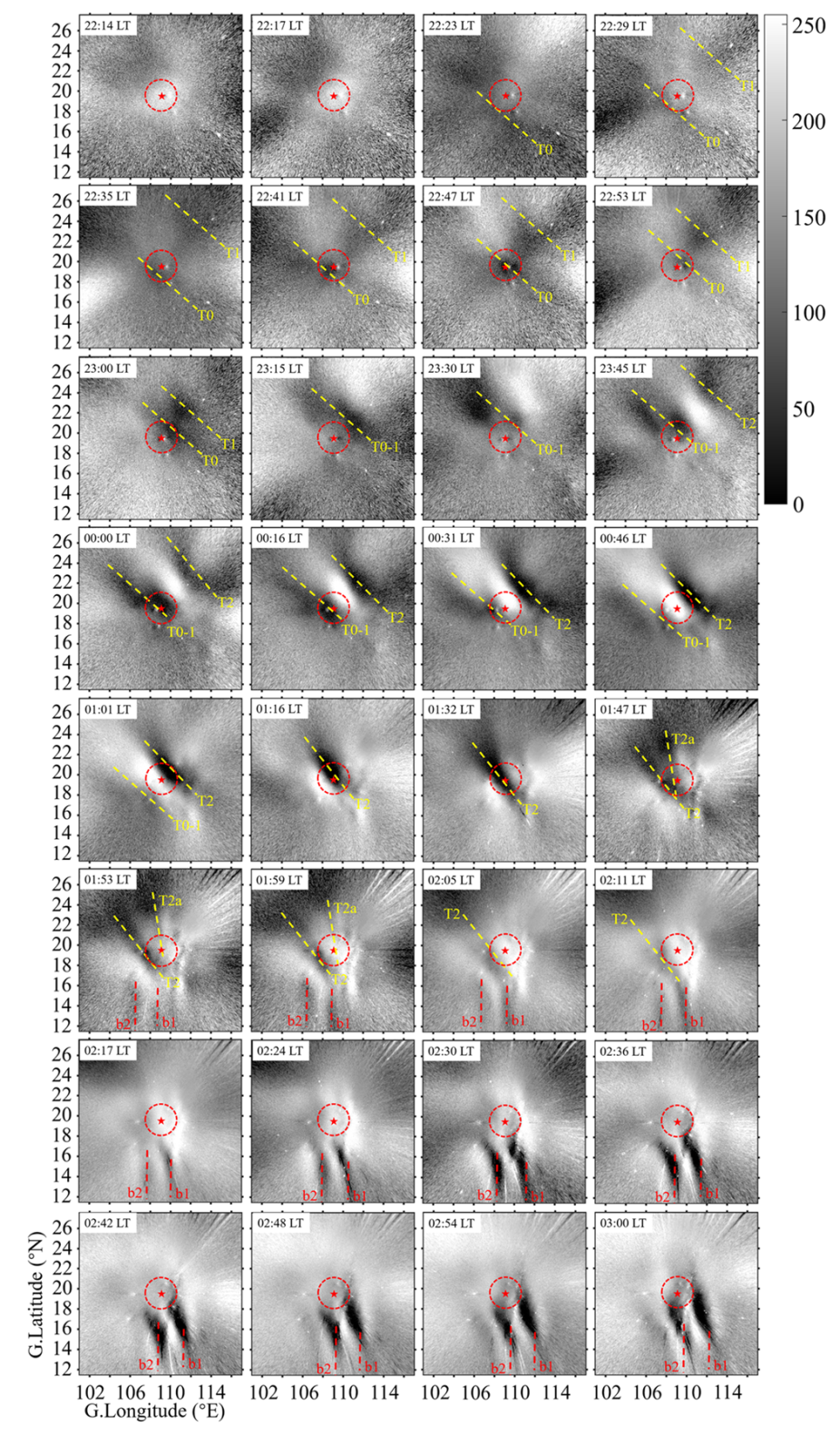
Airglow images from the all-sky imager (630 nm filter) located at Fuke station between 22:14 and 03:00 LT on 13-14 May, 2013. All images were mapped into the geographic coordinates by assuming that the emission layer was at an altitude of 250 km. The red circle represents the field of view of the digisonde at an altitude of 250 km. The yellow dashed lines represent the MSTID structures, and the red dashed lines represent EPB structures. The top of each image is the north and the right of each image is east.
Remote Sensing: We investigate the interactions between medium-scale traveling ionospheric disturbances (MSTIDs) and the equatorial ionization anomaly (EIA), and between MSTIDs and equatorial plasma bubbles (EPBs) on the night of May 13-14, 2013, based on observations from multiple instruments (all-sky imager, digisonde, and global positioning system (GPS)). Two dark bands (the low plasma density region) of MSTIDs were observed moving towards each other, encountered, and interacted with the EIA, and subsequently interacted again with the EIA before eventually dissipated. Then, a new dark band of MSTIDs moved in the southwest direction, drifted into the all-sky imager’s field of view (FOV), and interacted with the EIA. Following this interaction, a new dark band split off from the original dark band, slowly moved in the northeast direction and eventually faded away in a short time. Subsequently, the original southwestward-propagating dark band of the MSTIDs encountered eastward-moving EPBs, leading to an interaction between the MSTIDs and the EPBs. Then, the dark band of the MSTIDs faded away, while the EPBs grew larger with a pronounced westward tilt. Results from various observational instruments indicate the pivotal role played by the high-density region of the EIA in the occurrence of various interaction processes. In addition, this study also revealed that MSTIDs propagating into the equatorial region can significantly impact the morphology and evolution characteristics of EPBs.